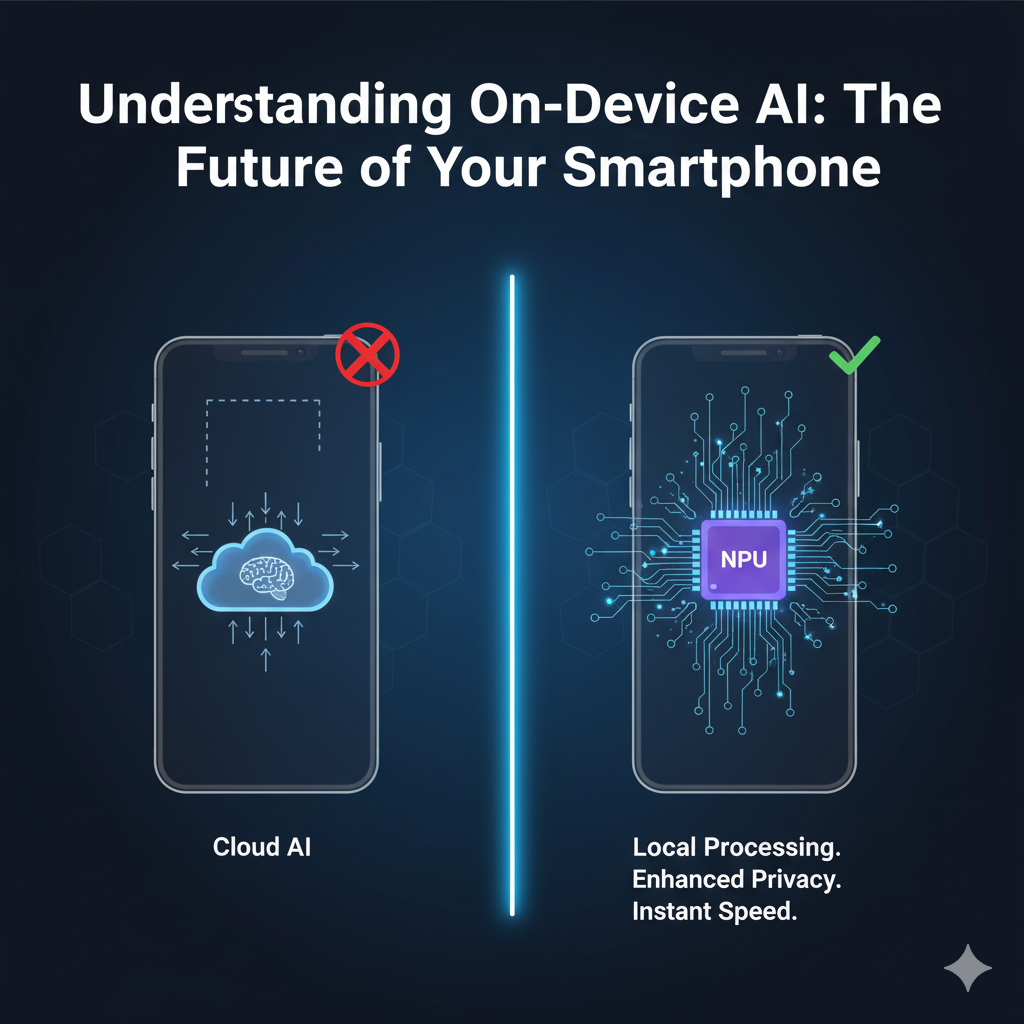
Introduction: The AI Revolution in Your Pocket
Artificial Intelligence isn’t just living in the cloud anymore. It’s moving directly into your devices, changing how our smartphones, wearables, and even home appliances operate.
This shift is called On-Device AI, and it’s poised to redefine not just the performance, but also the privacy and efficiency of our favorite gadgets.
But what exactly is On-Device AI, and why is it becoming the hottest trend in consumer technology? Let’s dive into the future that’s already in your hand.
1. What is On-Device AI?
On-Device AI, also known as Edge AI, refers to artificial intelligence processing that happens directly on your device (like a smartphone, laptop, or smart home gadget) rather than relying on remote cloud servers.
Instead of sending your data to a distant data center for processing and then receiving the results back, the AI models and algorithms are embedded directly into the device’s hardware.
Key Characteristics:
- Local Processing: All AI computations occur locally.
- Specialized Hardware: Often powered by dedicated AI accelerators (NPUs – Neural Processing Units) in the device’s chip.
- Pre-trained Models: AI models are typically trained in the cloud, then optimized and compressed for efficient execution on the device.
2. Why On-Device AI Matters: The Core Benefits
The shift from cloud-based AI to on-device AI brings a trifecta of benefits for users.
- Data Stays Local: Sensitive data (photos, voice commands, personal preferences) never leaves your device. This significantly reduces the risk of data breaches and unauthorized access by third parties.
- Reduced Cloud Reliance: Less data sent to the cloud means fewer points of vulnerability.
A. Enhanced Privacy and Security
B. Lightning-Fast Performance
- No Latency: Eliminates the delay (latency) caused by sending data back and forth to a remote server. AI tasks are performed almost instantaneously.
- Offline Functionality: AI features work even without an internet connection, making them reliable in any situation (e.g., real-time language translation in an remote area).
C. Superior Efficiency
- Lower Power Consumption: Specialized NPUs are designed to run AI tasks more efficiently than general-purpose CPUs or GPUs, extending battery life.
- Reduced Bandwidth Usage: Less data transferred over networks means lower data costs and faster performance for other tasks.
3. Real-World Applications in Your Devices
On-Device AI is already powering many features you use daily.
- Smartphones:
- Real-time Photo Editing: Instantaneous background blur, object recognition, and image enhancement.
- Live Translation: Translating languages on the fly during calls or conversations.
- Personalized Suggestions: Contextual recommendations for apps, contacts, or calendar events.
- Advanced Biometrics: Faster and more secure facial recognition (e.g., Apple Face ID).
- Wearables:
- Precise Health Tracking: More accurate activity recognition, heart rate monitoring, and sleep analysis.
- Voice Assistant Processing: Quicker responses from smart assistants without cloud dependency.
- Laptops:
- Video Conferencing Enhancements: AI-powered background blur, eye-contact correction, and noise suppression.
- Performance Optimization: Adapting power usage based on user habits and application demands.
The RealUseScore Outlook: A Future Built on Local Intelligence
On-Device AI isn’t just a trend; it’s a foundational shift in how our technology will operate. As devices become more powerful and AI models more efficient, we can expect even more intelligent, private, and instantaneous features to seamlessly integrate into our daily lives.
The next time your smartphone instantly blurs the background of a photo or translates a conversation in real-time, remember: that’s the power of AI, right there in your hand.
